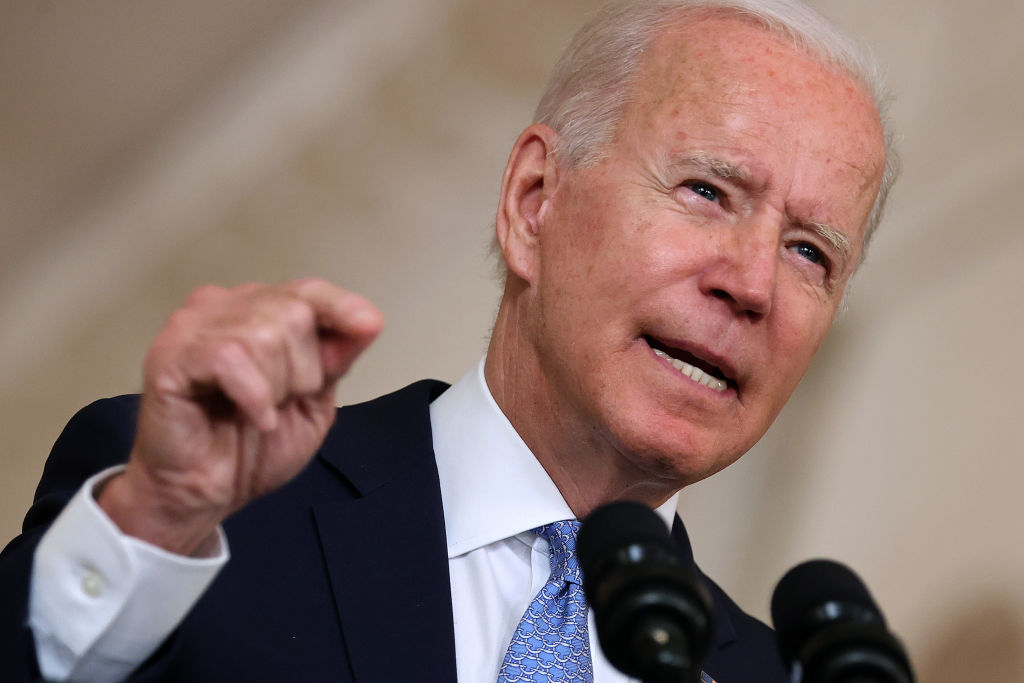
One year ago today, the Taliban, which spent the previous 20 years trying to evict the U.S.-backed Afghan government from power, succeeded in doing just that. With U.S. forces on their way out and Afghan troops struggling to hold off a rapid Taliban advance, the group strolled into Kabul unopposed. President Ashraf Ghani went into exile the same day, and tens of thousands of Afghans who didn’t have the luxury of their own personal aircraft would rush toward Kabul international airport in a desperate attempt to flee.
Unsurprisingly, the anniversary of the Taliban’s first year in power has generated a fair share of reflection. The U.S. government is undergoing multiple inter-agency reviews about what went wrong. But comments from former U.S. commanders of the war deserve particular scrutiny because some still believe the better alternative was to stay.
In television appearances and essays, Ret. General David Petraeus, a highly decorated four-star commander who led U.S. forces in Afghanistan during the U.S. troop surge of 2010-2011, insists President Biden should have managed, not quit, the war. Gen. Kenneth McKenzie, who commanded U.S. forces in the Middle East during the Taliban takeover, had a similar take. Asked what his recommendation to the President was in those tension-filled weeks, McKenzie said he advised approximately 2,500 U.S. troops should stay in Afghanistan “indefinitely” to stave off a collapse.
Neither of these recommendations were sound policy then—or today. Whether it was Gen. William Westmoreland in Vietnam, Gen. David Petraeus in Iraq or Gen. Stanley McChrystal in Afghanistan, commanders tasked with winning a war always believe they can salvage the situation if they have more resources. Policymakers, though, have a responsibility to see the bigger picture, weigh the costs and benefits of a proposed action, and determine whether it ultimately serves the U.S. national security interest.
Even before the Taliban captured Kabul, the Afghan state depended on foreign donors for about three-quarters of its budget. The Afghan army was totally reliant on the U.S. for everything from ammunition and weapons to air support and logistics. Afghanistan veteran Elliot Ackerman referred to it as a “plywood army,” a force with massive systemic problems the U.S. simply couldn’t resolve. Though countless Afghan troops have fought heroically for their country, far too many of them were being taken off the battlefield. Some 69,000 Afghan security forces died in the 20-year conflict, according to estimates by Brown University’s Cost of War project, and thousands more were wounded. None of this accounts for desertions, which nagged the Afghan army until its last days.
Afghan troops on the frontlines eventually concluded that risking their lives on behalf of a corrupt, ineffectual and detached political elite in Kabul didn’t make sense. This shouldn’t have been a surprise, given that the government was even failing to pay them. It’s difficult to envision how delaying the U.S. withdrawal further would have solved any of these problems—even if it has come with steep costs, including the crushing of women’s rights and a worsening humanitarian crisis.
If the critics had their way, the August 2021 withdrawal would have been pushed to an undetermined date. But “undetermined” likely meant “forever” because the objectives of building a modern Afghan state or pressuring the Taliban to join the Afghan political system were unachievable. We know this because U.S. military officers, policymakers, regional specialists and aid workers tried and failed on both of these objectives.
While the Taliban may have been willing to negotiate prisoner releases with the Afghan government, the group always viewed the U.S.-supported Afghan political system as an illegitimate creation at the hands of foreigners. More firepower would not have convinced the insurgents to join a system they spent two decades seeking to overthrow—especially when the Taliban had the luxury of a safe haven in next-door Pakistan.
Commentators have spent much of their attention on the chaotic scenes and poor implementation of the two week-long U.S. evacuation. U.S. forces, under the command of President Biden, failed to anticipate the speed of the Taliban’s takeover, as did the U.S. intelligence community. These were embarrassing mistakes covered round-the-clock on news bulletins, and it took a toll on the administration’s claims of experience and competency.
At the same time, the chaotic exit also underscored that the war was a hopeless exercise—one the U.S. spent more than $2 trillion on, including $146 billion in reconstruction costs. Not to mention the human toll of the conflict—mostly Afghan but thousands of American troops and contractors as well.
A plurality of Americans continue to support Biden’s decision to withdraw from Afghanistan. It may not have been an easy decision to make; no president, after all, wants to be tarred with a lost war. Yet Americans—and Biden—saw what commanders did not: throwing more resources into Afghanistan was a losing proposition.
More Must-Reads from TIME
- Donald Trump Is TIME's 2024 Person of the Year
- Why We Chose Trump as Person of the Year
- Is Intermittent Fasting Good or Bad for You?
- The 100 Must-Read Books of 2024
- The 20 Best Christmas TV Episodes
- Column: If Optimism Feels Ridiculous Now, Try Hope
- The Future of Climate Action Is Trade Policy
- Merle Bombardieri Is Helping People Make the Baby Decision
Contact us at letters@time.com